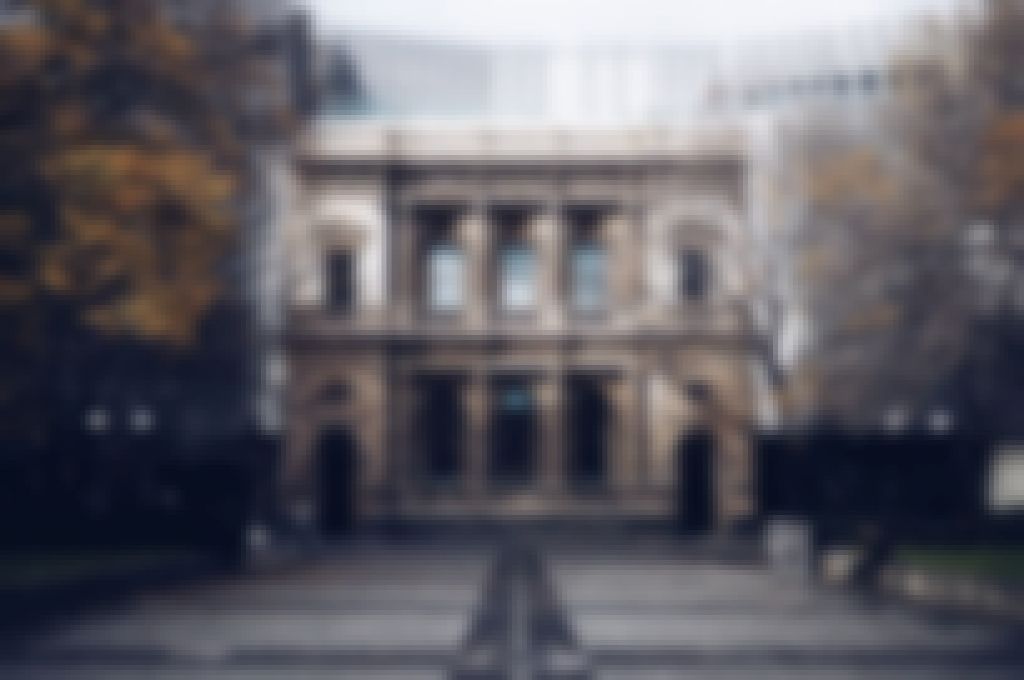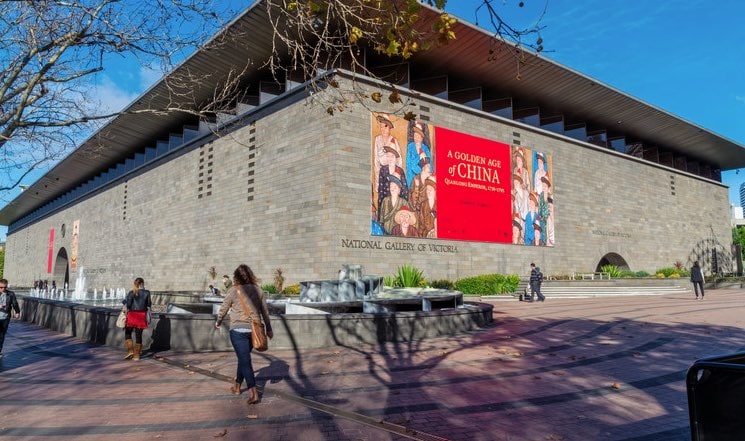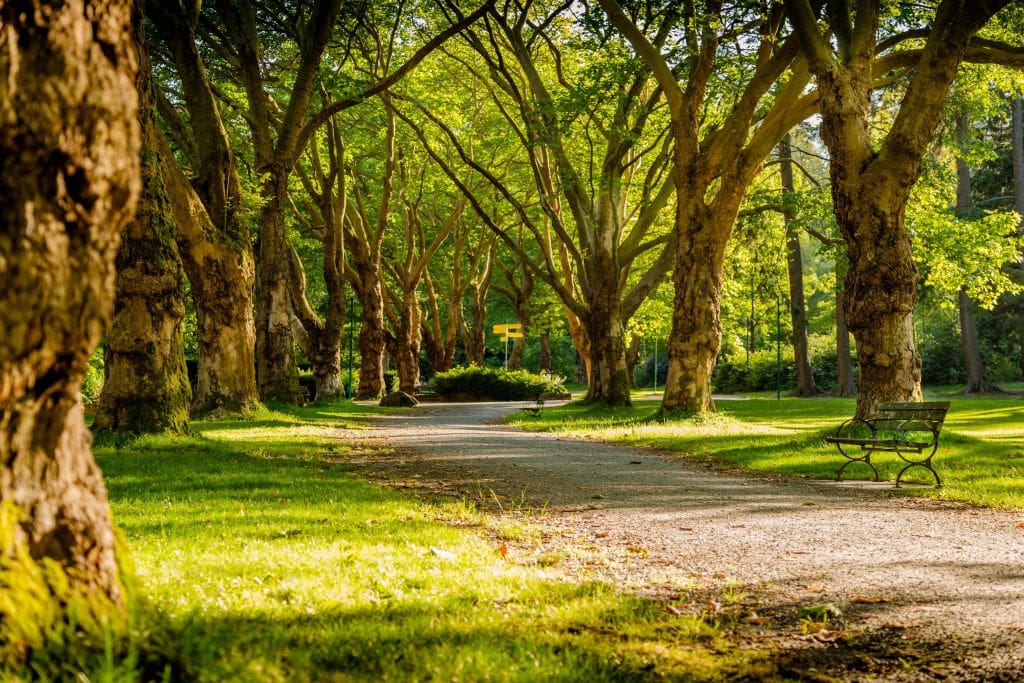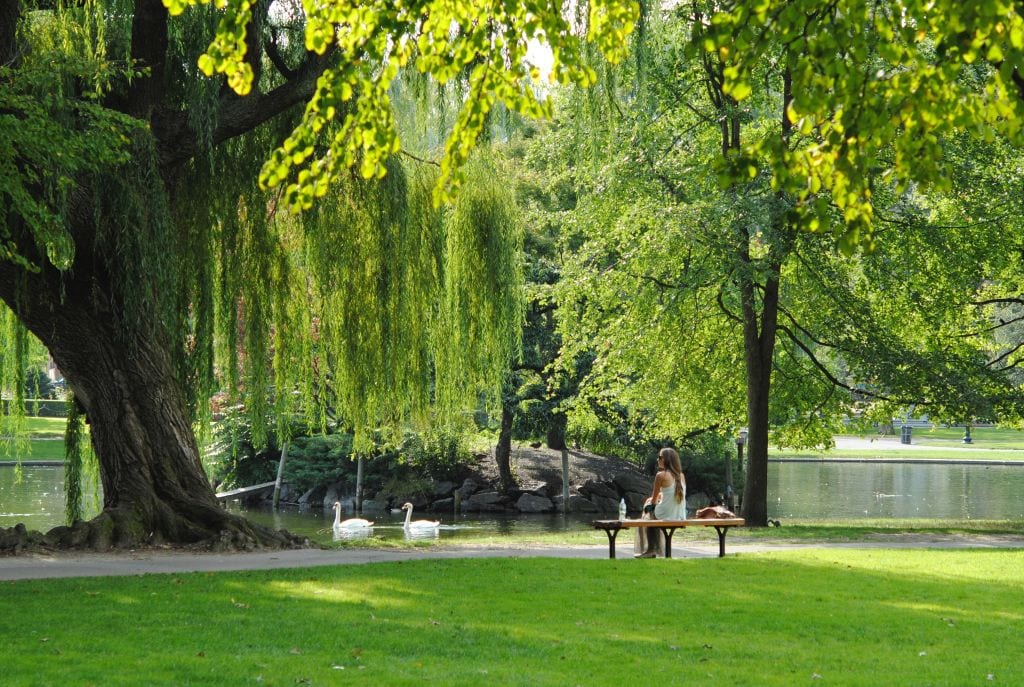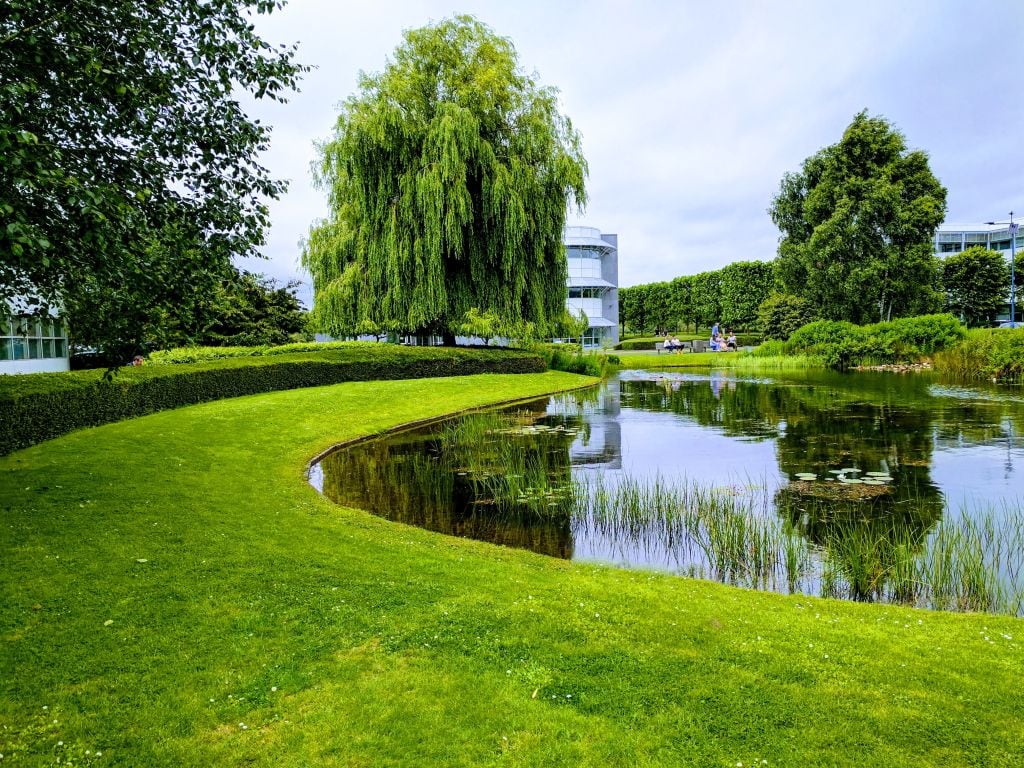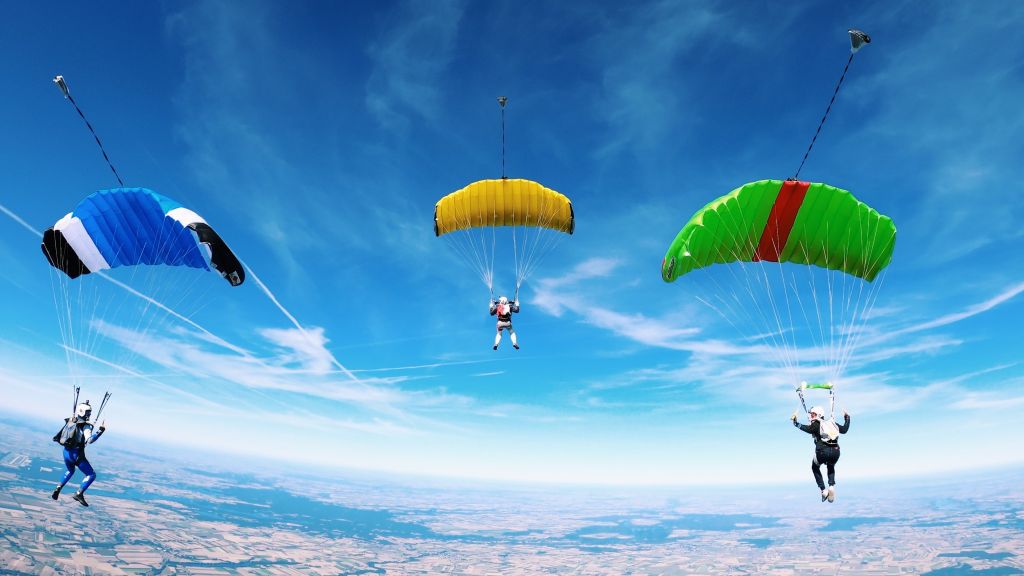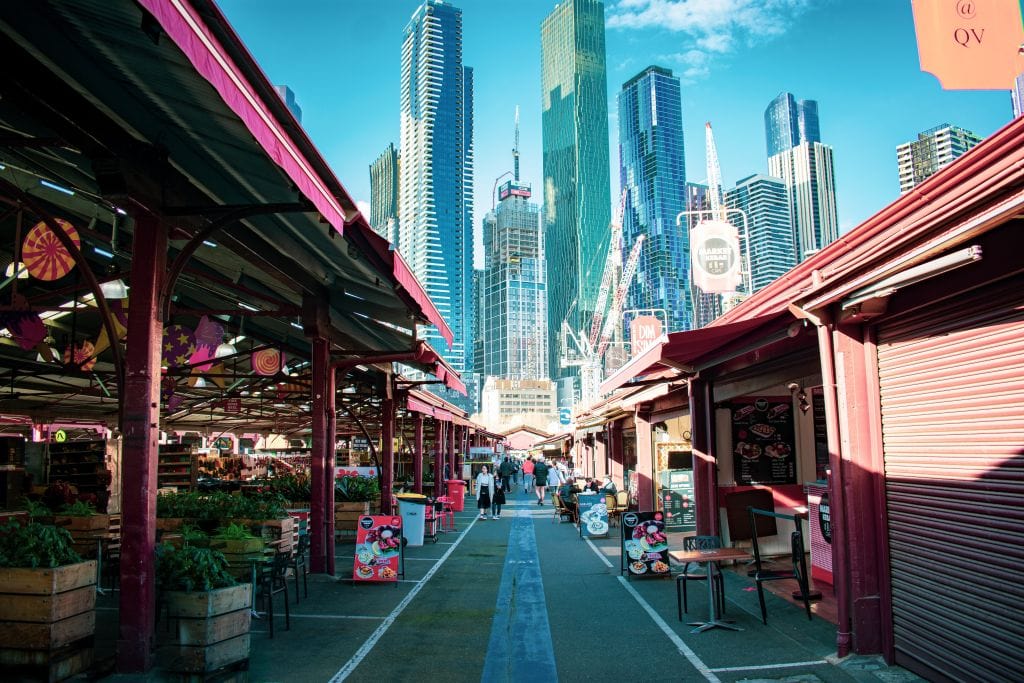Melbourne is a vibrant and modern city with a vibrant downtown, charming inner-city neighbourhoods, and beautiful parks and mountain ranges where you can experience the best of what Australia has to offer in its natural splendour. The city's extensive network of alleyways, its wide range of cultural offerings, the high quality of its dining options that are accessible to people of varying financial means, and its incredible street art have all contributed to the city's international reputation. Not only is it widely recognised as the world's foremost centre for the production of coffee, but it also consistently tops lists of the world's most liveable cities. Let's take advantage of all that Melbourne has to offer by visiting some of its most popular landmarks and pastimes: You can see the entire campus from high above on the balcony of Hamer Hall.
Get a bird's eye view from the balcony of Hamer Hall
What is it?
Hamer Hall is well-known not only for the concerts and plays it hosts, but also for the spectacular view it offers from its balcony overlooking Melbourne.
Why go?
This is one of the few times you won't need to ride an elevator to get to a great vantage point over the city. From the patch of grass next to Arts Centre Melbourne, you can climb the stairs to Hamer Hall. Reaching the top of the flight of stairs, leave the warm red walls of Hamer Hall and take in the riverside scenery.
Don't miss:
Go see a show while you're in town! It's up there with the city's best concert halls in terms of prestige.
The reopening of Arts Centre Melbourne's Hamer Hall attracted a crowd of 50,000 admirers due to the hall's illustrious history and the high regard in which the people of Melbourne hold it.
It took two years and $135.8 million to renovate the rounded building that looks out over the Yarra and is located across the street from Federation Square. As a result of the renovation, the auditorium now has better acoustics, air conditioning, lighting, and seating technology. The building's renovation has made it a crown jewel in Melbourne's thriving theatre scene.
National Gallery of Victoria
The National Gallery of Victoria (NGV) is Australia’s oldest and pre-eminent public art museum
When it comes to public art museums, Australia's National Gallery of Victoria (NGV) is both the oldest and most prestigious. During the year 1861, it first opened its doors.
An Oceanic gallery is dedicated to the original inhabitants of the Pacific and includes artefacts from ancient civilizations like Egypt, Greece, and Rome as well as pre-Columbian times.
Furthermore, there are nearly 16,000 international prints and drawings, a distinguished array of European and Asian decorative arts, and a gallery space displaying 4,000 works of art that are representative of the art of Asia. Along with displays of clothing and textiles, photography, furniture, and sculpture, the museum also houses an impressive collection of European and British paintings spanning the years 1200 to the present day.
The Tea Room is just one of many dining options, including the onsite Persimmon and Gallery Kitchens. Melbourne, Australia is home to the National Gallery of Victoria, also known as the NGV for short. It was established in 1861 and is now the oldest, largest, and most visited art museum in Australia.
Royal Botanical Gardens Melbourne
In 1857, Ferdinand von Mueller was hired as the garden's first director. He also brought exotic plants from all over the world to the Botanical Gardens, making him one of the most famous botanists of the 19th century.
The second and most illustrious director of the Botanical Gardens, Willian Guilfoyle, took over for Mueller. In order to create the stunning natural spectacle that is present-day Guilfoyle, the area's appearance and layout were altered.
With the help of Mueller's National Herbarium and his own collection of plants, he turned the garden into a sprawling landscape of lakes, gardens, and walkways. Guilfoyle was aided greatly in his efforts to turn the garden into a modern tourist attraction and natural retreat by the pleasant and mild weather conditions that are typical of Melbourne.
This structure is home to over 12,000 unique plant species thanks to a climate that encouraged the development of both tropical and temperate vegetation. Visitors can enjoy the natural beauty of the trees and get up close and personal with native animals, and the ecosystem that has been created is stable and natural for native birds and animals to build their homes in.
In 1960, the Melbourne Botanic Gardens began an expansion project by purchasing a plot of land immediately adjacent to the gardens. As a result, in 1970, the Cranbourne Gardens were founded, and in 1985, they first welcomed the public.
The current name of the garden, which includes the prefix "Royal," was chosen in 1958 by Queen Elizabeth II. Nowaday's Royal Botanic Gardens of Melbourne are a combination of the older Melbourne Garden and the newer Cranbourne Garden.
How to Reach Royal Botanical Gardens Melbourne
Traveling to the Royal Botanic Gardens in Melbourne from Melbourne Airport is simple and quick thanks to the airport's proximity to the city centre.
- By Car:
The Royal Botanic Gardens Melbourne are about 25 kilometres from the airport, and getting there by car is the quickest and least stressful option. About 25 kilometres separate the two points of interest. To get to the Botanical Gardens, you can either rent a car or take a taxi; these modes of transportation will take you along Mascoma Street, the Calder Freeway/M27, or the M2. We anticipate that the journey will take between 25 and 30 minutes to complete.
- By Bus:
The Royal Botanic Gardens can also be reached by train. Melbourne's extensive tram network makes it easy to reach the gardens via routes 3, 3A, 5, 6, 16, 64, 67, or 72. It is also possible to walk there from the downtown area.
- By Trains:
You can also reach the Royal Botanical Gardens by train. There is an extensive network of tramways operating in Melbourne, and you can take tram numbers 3 and 3A, No. 5, No. 6, No. 16, No. 64, No. 67 and No. 72 to reach the gardens.
Best Time to Visit Royal Botanical Gardens Melbourne
Spring (September–November) and summer are widely regarded as the best times to visit the Royal Botanical Gardens (December to February). Melbourne has pleasant weather for most of the year, but spring and summer are when you should visit to get the most out of the city. The Botanical Gardens are at their most breathtaking now.
During the warmer months of the year, when average highs in Melbourne hover around 26 degrees Celsius, the city's weather is at its most agreeable. When the sun is out, the gardens are a wonderful place to take a stroll and admire the scenery.
Summer (December – February):
The summer months in Melbourne are most pleasant, with maximum temperatures staying around 26 degrees Celsius. You can walk around the gardens in the warm sunlight and take in all the views the garden has to offer.
Spring (December to February):
During the warmer months of the year, when average highs in Melbourne hover around 26 degrees Celsius, the city's weather is at its most agreeable. When the sun is out, the gardens are a wonderful place to take a stroll and admire the scenery.
Autumn (March-May):
The maximum temperature averages around 20 degrees Celsius during autumn. While you may not spot too many flowering plants at this time of the year, you can enjoy the gorgeous fall colours that take over the Botanical Gardens at this time of the year.
Winter (June – August):
To put it simply, spring is when the garden's flowers are at their most vibrant and plentiful. The city is transitioning from its cold winter to its warmer summer months, but the weather shows no signs of changing and remains mild. During this time of year, the Royal Botanic Garden in Melbourne is a must-see.
What Not to Miss at Royal Botanical Gardens Melbourne
When you have some free time in Melbourne, you shouldn't just visit the Botanic Garden, but also some of the other nearby exciting attractions.
Shrine of Remembrance:
The Shrine of Remembrance is arguably Melbourne's most recognisable landmark due to its rich historical significance and striking architectural design. In honour of the valiant Australians who gave their lives in the war, a memorial has been built there. Exhibitions are held in this building, and despite its sombre exterior, it is a popular stop for sightseers seeking educational opportunities.
La Trobe’s Cottage:
One of the most visited spots near Melbourne's Royal Botanic Garden is the cottage that once belonged to Lieutenant General Charles La Trobe. The garden makes it even more interesting, but the site is fascinating in its own right. He created the garden, and a trip through his cottage, which is filled with mementoes from his life and garden-related objects, can be fascinating.
The National Gallery of Victoria:
The oldest and most popular art gallery in Australia is located in Melbourne, and visitors should not miss it if they are in the city. Everything from art to fashion is represented in this gallery's installations, ensuring that visitors of all tastes will find something to enjoy. Over forty exhibitions on a wide variety of topics are held here each year.
Eureka Skydeck:
If you enjoy sightseeing and would like to create a happy memory by photographing the breathtaking panorama of Melbourne that can be seen from the Eureka Skydeck, you should go there. The Royal Botanic Garden of Melbourne, as well as the rest of the city, can be admired from above thanks to its open design.
Discover the best of St Kilda
What is it?
St. Kilda, in the south of Melbourne, is a very special bohemian enclave. The Luna Park gates, featuring a smiling face, have become iconic, appearing in shows like The Secret Life of Us.
Why go?
Among Melbourne's suburbs, it is among the most diverse. Luna Park is Australia's oldest amusement park, and many of its original rides are still in use today. The merry-go-round was built in 1913, and the Scenic Railway first opened to the public in 1912.
Following that, take in the twilight views as you stroll down Jacka Boulevard towards the breakwater in St. Kilda, where you can see a thriving colony of little penguins. The little black and white critters can be seen year-round, but summer evenings are the best time to spot them.
Don't miss:
If you are afraid of the ocean, you can take a dip at the St. Kilda Sea Baths. Views of the water will still be breathtaking, but you'll also have access to a café and a steam room with aromatherapy.
A local's guide to St Kilda
St. Kilda's past is every bit as vibrant as the modern metropolis it has become. St. Kilda has been renowned as Melbourne's seaside playground since the middle of the nineteenth century, when it was first popular among the city's affluent as a vacation destination. However, it gained notoriety as a red light district during the 1950s and 1960s.
What's St Kilda known for?
St. Kilda's past is every bit as vibrant as the modern metropolis it has become. St. Kilda has been renowned as Melbourne's seaside playground since the middle of the nineteenth century, when it was first popular among the city's affluent as a vacation destination. However, it gained notoriety as a red light district during the 1950s and 1960s.
Why do the locals love it?
Partially as a result of two seasons of The Block, which renovated the infamous Gatwick Hotel and Oslo Hostel, the gritty, grungy area is being gentrified at an alarming rate. Many St. Kildans, however, would argue that the area's distinction from the rest of Melbourne and the rest of the world stems from this very contrast in personality.
The 3182 area code, which is close to the city's central business district, is home to an abundance of facilities and conveniences.
"One of the things about St. Kilda is its really strong creative community, not just artistically creative but also in terms of being entrepreneurial," says Oakies, better known as the director of the St. Kilda Twilight Market.
"Although St. Kilda has undergone multiple phases of gentrification, the neighbourhood has retained its edge and vibrancy, much to the delight of the area's natives. As far as I can tell, that is because of how fleeting it is.
St. Kilda is a tourist hotspot, so it naturally attracts a large number of visitors. In Melbourne, it is often compared to a beachside playground. I don't think Luna Park will ever be taken away, and its presence adds to the carnival vibe.
Everyone leaves a piece of themselves in St. Kilda, and everyone brings home a piece of St. Kilda with them.
How do I get to St Kilda?
There may not be a train station in St. Kilda, but the neighbourhood is still very walkable and easily reached by bus or tram. From Melbourne's CBD, you can reach Fitzroy Street on one of three tram lines (12, 16, or 96). Get off at St. Kilda Junction on one of the many other trams on St. Kilda Road if you're in the mood for a leisurely stroll past Albert Park and the wonderful selection of restaurants and cafes directly across the street.
Additionally, there are numerous bus routes from which to pick. The SkyBus provides an easy and comfortable way for passengers to get to and from the airport, stopping at four different locations in and around St. Kilda.
What’s Nearby?
St. Kilda is located on Port Phillip Bay, between Middle Park and Elwood. You can find St. Kilda in the middle. Northern neighbourhoods like Windsor and Prahran are easily accessible on foot.
Federation Square
Fed Square, or Federation Square, is where the majority of Melbourne's top-tier cultural events and attractions take place. Located at the intersection of Flinders and Swanston Streets, it is one of the city's most visited tourist spots despite being slightly outside of Melbourne's central business district. Furthermore, the Flinders Street station is directly opposite.
Since opening in 2002, it has become one of Melbourne's top tourist attractions, drawing in millions of visitors annually. In addition, it has been recognised as the sixth best public square in the world and has won several awards for its design and construction.
Fed Square is a public plaza with an area of 3.6 hectares; it is encircled on all sides by nine buildings with elaborate architectural designs and beautiful facades. It features two public gathering areas: a spacious Plaza with an outdoor amphitheatre that can accommodate large events simultaneously, and an Atrium with a theatre enclosed in glass on the south side of the structure. The two locations can accommodate sizable events simultaneously.
Numerous popular tourist destinations can be found in and around Fed Square, including the National Gallery of Victoria's Australian collection, the Ian Potter Centre, the Australian Centre for the Moving Image (ACMI), and a wide variety of restaurants, bars, and boutiques selling one-of-a-kind items. You can take advantage of the free Wi-Fi, the free daily health and wellness classes, and the free sporting events shown on a huge TV screen.
The Fed Square has become the city's most recognisable gathering place as a result of its constant activity and the exciting calendar of events and activities that takes place here throughout the year. Each Thursday during the summer, there is a free outdoor concert or festival where you can learn about the local acoustic scene.
Live concerts and annual events at the Zinc, modern art exhibits and presentations of Australian artworks at the National Gallery of Victoria, and The Edge all make it easy to appreciate Melbourne's unparalleled cultural scene.
Location of Federation Square and Directions to It
Fed Square is conveniently located just 23 kilometres from Melbourne Airport (MEL), and can be reached by bus, taxi, car, or shuttle. The trip can be completed quickly and easily by car.
Every ten minutes, a bus will leave from Melbourne Airport T1 Skybus/Arrival Dr in the direction of your hotel. At its final stop, Skybus Coach Terminal/Spencer St. Services, you can catch a train to Fed Square or continue on foot.
The majority of travellers choose this option because it is the fastest and most convenient way to get from Melbourne Airport to Fed Square. The best way to minimise travel time, on the other hand, is to take a taxi.
Best Time to Visit Federation Square
When it comes to international tourists, however, the months of December through February are peak season. Temperatures during this summer can occasionally soar to dangerous heights. You should plan your trip for the early morning or late afternoon to avoid the extreme heat. There are many festivals and cultural events to attend during the summer that will teach you about the many facets of the city.
In addition, low temperatures and cloudy skies are typical during the winter season (June–August). It's true that January and February tend to be on the chillier side of the year, but if you can handle the cold you'll find some great deals on hotels and vacation packages. More than that, you'll get to experience the most captivating Christmas Carnival and mind-blowing light and sound shows.
Conclusion
An estimated 50,000 people attended the grand reopening of Hamer Hall at the Arts Centre Melbourne. The building's $135.8 million makeover took two years and stunning views of the Yarra to accomplish. In Australia, the oldest and most prestigious public art museum is the National Gallery of Victoria. More than 12,000 different kinds of plants can be found in Melbourne's Royal Botanic Gardens. Tourists can take in the flora and fauna up close, and the trees themselves are works of art.
European and British paintings from the early 1200s to the present day can be found in the National Gallery of Victoria. Both the historic Melbourne Garden and the more modern Cranbourne Garden now make up what is known as the Royal Botanic Gardens of Melbourne. The current name of the garden, including the prefix "Royal," was chosen by Queen Elizabeth II in 1958. The best times to visit are in the spring (September–November) and summer (December–February). One of Melbourne's most recognisable landmarks is the Shrine of Remembrance. Cottage of La Trobe is stuffed with personal belongings and garden-related knickknacks.
Among art museums, the National Gallery of Art in Canada is both the oldest and the most visited. The view from the Eureka Skydeck is spectacular, taking in the entirety of Melbourne below. Since the nineteenth century, St. Kilda has been recognised as Melbourne's seaside playground. The rides at Luna Park, Australia's first amusement park, are some of the oldest in the world. The once rough and tumble neighbourhood is undergoing rapid gentrification.
Taking a bus or tram is the most convenient way to get to St. Kilda. To better serve the community, the SkyBus makes four stops throughout the area. Most of Melbourne's major cultural events and attractions can be found at Federation Square. It is a popular destination for visitors to the city. Fed Square is a large public plaza, covering an area of 3.6 hectares and enclosing nine adjacent buildings.
It has a large Plaza with an outdoor amphitheatre that can host multiple large events at once, and it also has an Atrium with a theatre enclosed in glass. In spite of its accessibility at any time of year, visitors to Fed Square are more likely to show up when the weather is nice. The most agreeable times to visit are from March to May and from September to November. There is a large influx of foreign visitors to Fed Square in Melbourne, Australia between the months of December and February.
Content Summary
- I mean, what is it, exactly? Not only is Hamer Hall famous for the concerts and plays it hosts, but also for the breathtaking panorama it provides of nearby Melbourne from its balcony.
- Check out a local performance while you're here!
- This $135.8 million renovation of a spherical building directly across the street from Federation Square took two years and offered stunning views of the Yarra.
- The National Gallery of Victoria, abbreviated as the NGV, is located in Melbourne, Australia.
- Having opened its doors in 1861, it has since become Australia's oldest, largest, and most popular art museum.
- The Royal Botanic Gardens in Melbourne are home to an incredible number of plant species.
- As the garden's first director, Ferdinand von Mueller was hired in 1857.
- Discover the Royal Botanic Gardens in Melbourne with This Convenient Location Guide
- As a result of Melbourne Airport's close proximity to the city centre, visiting Melbourne's Royal Botanic Gardens is a quick and painless experience.
- Traveling by car is the quickest and least stressful way to reach the Royal Botanic Gardens Melbourne, which are located about 25 kilometres from the airport.
- The weather in Melbourne is mild for most of the year, but spring and summer are the best times to visit.
- If you find yourself in Melbourne with some spare time, don't waste it wandering aimlessly; instead, check out the Botanic Garden and the other exciting attractions in the area.
- The cottage that belonged to Lieutenant General Charles La Trobe is a popular tourist destination close to Melbourne's Royal Botanic Garden.
- Visitors to Australia should not miss the National Gallery of Victoria in Melbourne, the country's oldest and most popular art gallery.
- Hello, and welcome to the Eureka Skydeck!
- You should visit the Eureka Skydeck if you like taking pictures and want to capture the breathtaking view of Melbourne for the sake of a happy memory.
- St. Kilda is a unique bohemian enclave in the southern part of Melbourne.
- The rides at Luna Park, Australia's first amusement park, are some of the oldest in the world.
- The St. Kilda Sea Baths offer an ocean-free swimming experience for those who suffer from sea sickness.
- Since the middle of the nineteenth century, when it was first visited by the wealthy of Melbourne, St. Kilda has been known as the city's seaside playground.
- This area, however, became notorious as a red light district in the 1950s and 1960s.
- St. Kilda has been through several waves of gentrification, but the neighbourhood has managed to keep its edge and vitality, much to the delight of its longtime residents.
- Tourists flock to St. Kilda because it is a popular destination.
- Despite the absence of a train station, St. Kilda is still a highly accessible and walkable community.
- In Melbourne, the majority of the city's most prestigious cultural events and attractions can be found in Fed Square, also known as Federation Square.
- Due to its constant activity and exciting calendar of events and activities, the Fed Square has become the city's most recognisable gathering place.
- Federation Square's Whereabouts and Accessibility
- Fed Square is easily accessible via bus, taxi, car, or shuttle from Melbourne Airport (MEL), which is situated only 23 kilometres away.
- You can either transfer to a train at Skybus Coach Terminal/Spencer St. Services and travel on to Fed Square, or you can walk from there.
- Travelers who need to get from Melbourne Airport to Fed Square in a hurry typically opt for this service.
- Instead, getting there quickly is best accomplished by taxi.
- Fed Square is worth a visit at any time of the year because there is always something interesting happening there.
- The winter season (June–August) also features low temperatures and cloudy skies.
FAQs About Melbourne
- Melbourne's famous tramway system is the largest outside Europe and the fourth largest in the world.
- The world's first feature film, the Story of the Ned Kelly Gang was filmed and made in Melbourne in 1906.
- Melbourne had the first gay and lesbian radio station in the world.
Melbourne is often referred to as Australia's garden city, and the state of Victoria is known as "the garden state".
You won't be bored, because there is always something going on in Melbourne; we have a festival to celebrate everything! We love our, fashion, art, music, food, film, kid's events and multicultural festivals! Majority of our festivals are free.

